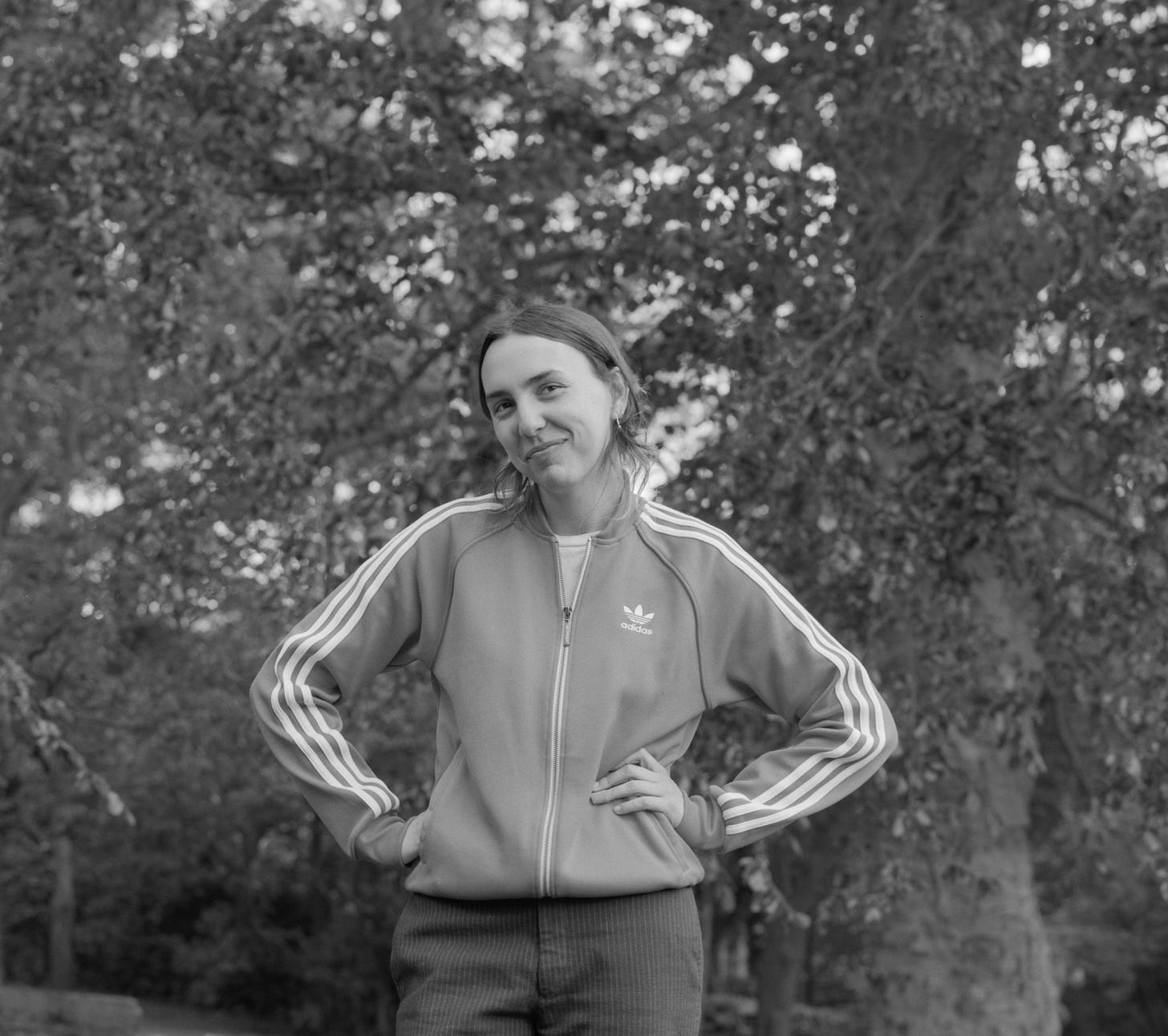Interview with an Artist: Avery Moore
Avery Moore is an artist drawn to color and light and how they interact. She uses gelatin within her sculpture practice, an inspiration that came from growing up with a mom who owned a candy shop.
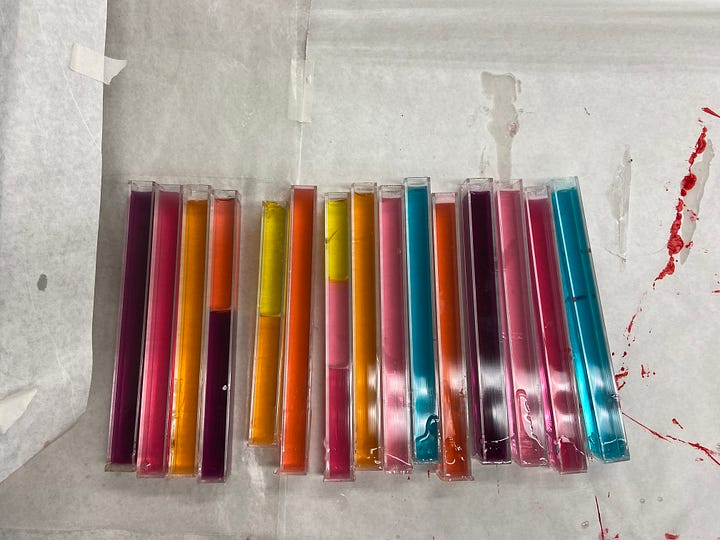
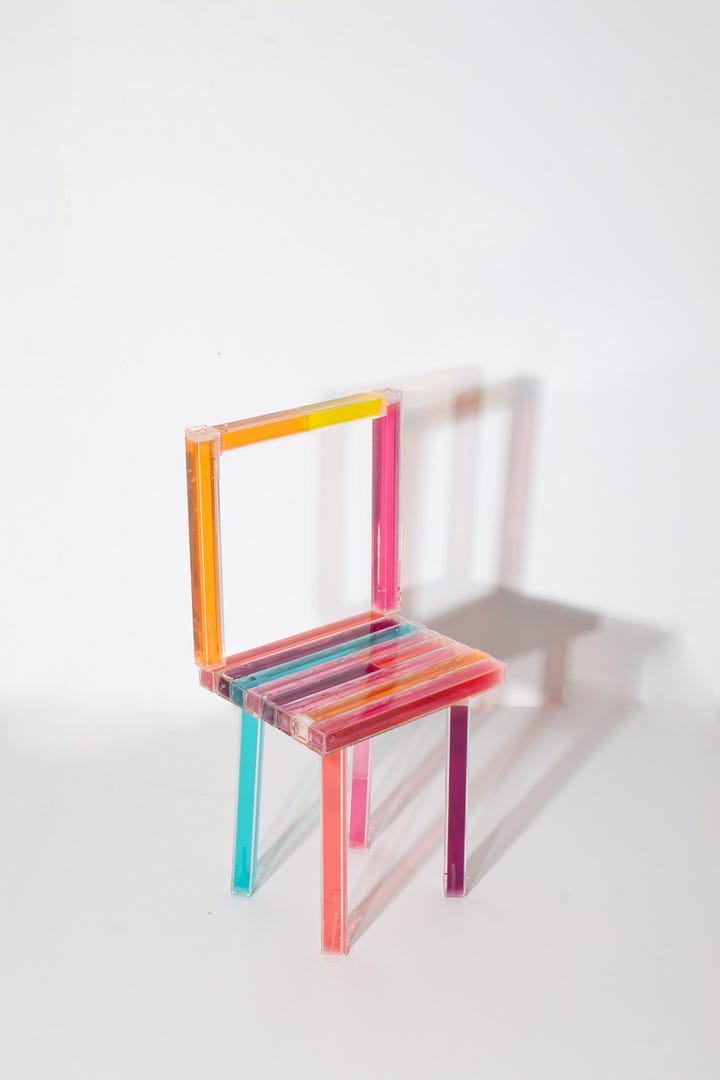

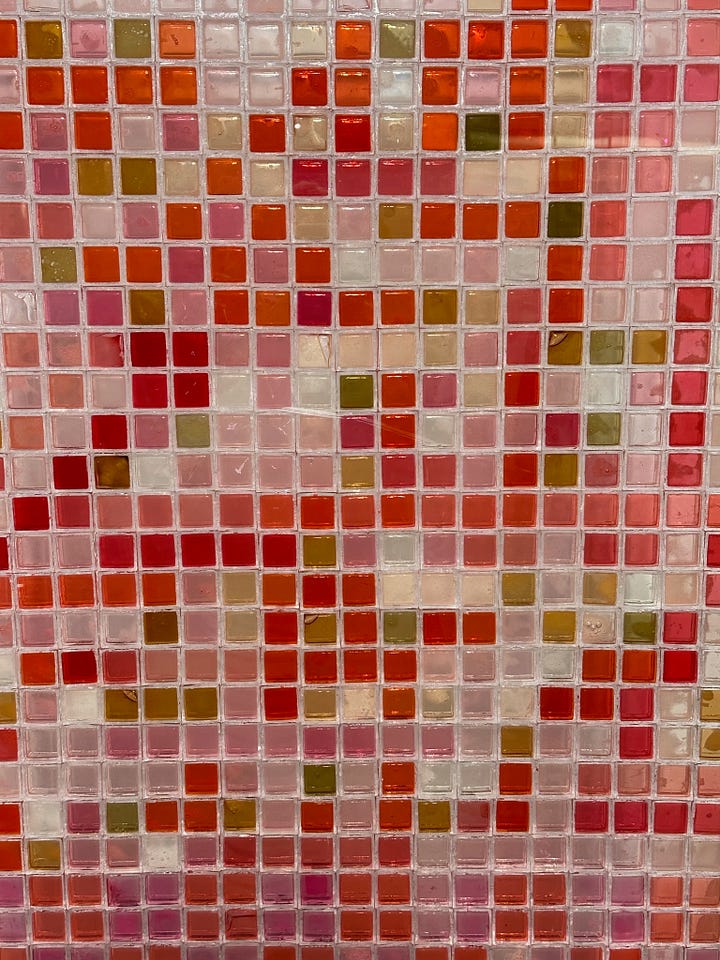
Emily Logan: Tell me about your art practice.
Avery Moore: The interaction of color and light has always evoked an overwhelming and euphoric satisfaction in me, summoning feelings that are difficult to verbalize. These kinds of inarticulable, emotive interactions are what I strive to achieve through my work.
With limited resources at 18 years old, I often perused the aisles of the grocery store in my college town. Influenced by the colorful and pristine marketing tactics of brands like JELLO, I found myself buying cases of the dessert and truly became engrossed in the potentiality of this unlikely material. Gelatin is a colorless, flavorless substance derived from animal collagen, typically extracted from the connective tissues, skin, and bones of cows or pigs. It is commonly used as a thickening agent in food, cosmetics, and pharmaceuticals, and thus is a material that humans interact with daily. I spent the next four years of college experimenting with egg whites, hot water, cold water, isopropyl alcohol, blooming gelatin, and different refrigerator temperatures to get this material to do exactly what I wanted it to do: achieve a combination of light and color that is imbued with ephemerality.
In addition to my material focus on gelatin, I am also deeply drawn to documenting the passage of time. Throughout high school, I conducted annual interviews with the same 10 people, asking them the same questions each year to track their personal growth and evolution from the ages of 14 to 18. During college, I photographed each dorm room I lived in to capture the essence of every place I briefly called home. And for every family member's birthday, I find myself making the quintessential slideshow chronicling their life as they age and evolve. Over time, I found that gelatin does the exact same thing. The pieces mold, the colors fade, and the water eventually evaporates, correlating with relationships in life. Life is ephemeral, I know that one day all those I know will die, my mom will die, I will die, and through my work, I am aiming to preserve what cannot be preserved. Just like gelatin, we are all slowly molding, till we dissolve and become nothing but a moment in time.
EL: You reference Dan Flavin in your About page. Did growing up in Los Angeles, home of the Light and Space movement, have an influence on your work as well?
AM: At a young age, I was enthralled by the work of the 1960s Light and Space movement, led by artists such as Dan Flavin, known for his use of glowing fluorescent light tubes. Flavin’s work explores the complex relationship between light, space, and the viewer’s perception of their environment. Artists like Craig Kauffman and Donald Judd—key figures in this movement—are deeply tied to the identity of Los Angeles, though I didn’t fully grasp that connection until I moved to the East Coast and experienced the stark contrast in architecture and atmosphere.
During my undergraduate studies, I was introduced to artists such as Cy Twombly and Josef Albers, whose work expanded my understanding of abstraction and introduced me to a less figurative, more nuanced use of color. I also found myself captivated by the oeuvre of conceptual artists such as Felix Gonzalez-Torres, who investigated themes of impermanence, loss, and viewer participation, most poignantly through his installations, where the audience is invited to take a piece of the artwork (often candy) home with them.
The intersection of these influences, environmental perception, abstract color sensibility, and participatory conceptualism, is where I want my art to stand: a dialogue between space, light, and emotional resonance, grounded in both presence and impermanence.
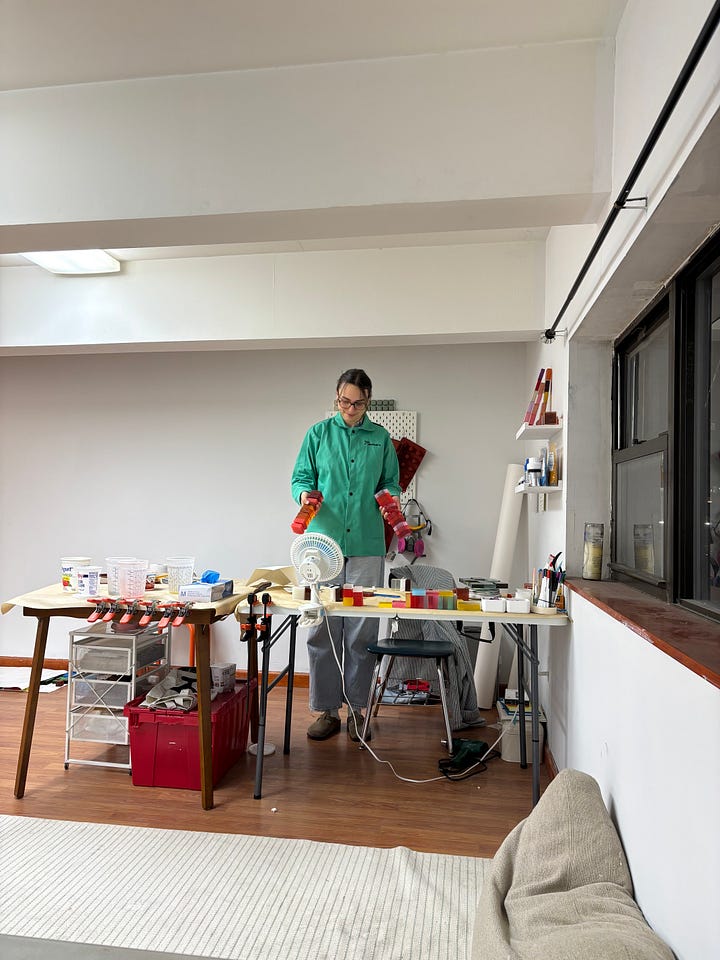

EL: Any interesting projects you are currently working on, or want to work on?
AM: At the moment, I’m in the process of moving out of my studio in Brooklyn and heading back to Los Angeles. I’m really looking forward to setting up a new space there and seeing how being in that specific city influences my relationship to my work. So much of what I’ve made has been rooted in reflection, and I’m excited to see how my practice evolves in the distinct light of LA, a quality I’ve spent so much time thinking about and have tried to artificially replicate while living on the East Coast.
EL: Currently, you work for David Zwirner Books. What does that entail?
AV: For the past two years, I’ve been working on the books team at David Zwirner in New York, where I manage the bookstore and oversee order fulfillment. This role has given me a unique perspective on the inner workings of the commercial art world, particularly how art book publishing, exhibition-making, and audience engagement intersect at a major gallery. I’ve gained valuable experience in logistics, customer service, and curatorial support through books, all while staying closely connected to ongoing conversations in contemporary art.
I’ve learned so much in this role and have found a supportive community of people who are also pursuing creative careers. This experience has broadened my understanding of what it means to be a working artist today and how creative work can exist within both commercial and conceptual spaces.
EL: I'm such a big fan of your mom, the owner of Little Flower Candy Co. What was it like growing up with a mom who ran a candy store? I want to hear more about how your relationship with your mom influences your practice.
AM: Growing up with a mom who ran a candy business had a profound impact on my work, she’s the reason I began using gelatin in the first place. My mom started her business in our kitchen, and I can still vividly picture the metro shelves lined with buckets of orange Knox gelatin. That image stayed with me, and when I got to college, the first thing I put in my studio was a container of gelatin. It’s a material that makes me feel close to her. Candy also has such a specific color palette, soft pastels and bright, artificial hues, that has heavily influenced my visual language.
As a child raised by a single parent, my greatest fear was that something might happen to that parent. When I moved away from home, working with gelatin became my way of staying connected to my mother. As strange as it may sound, I felt like I could understand her better while making those gelatinous sculptures. The process requires method, patience, and precision and it gives you a lot of time to think. In that space, I found a quiet closeness to her, and a deeper understanding of where I come from.
EL: Can we talk about your experience growing up in Altadena? How are you holding up with the recent fires impacting your family?
AM: When I was 14, my mom moved us from Mt. Washington (a centrally located neighborhood in Los Angeles) to Altadena. My friends called it the countryside. Without a driver's license, I started going on long walks through the neighborhood. That’s where I developed my love for walking and architecture. Altadena had such a unique mix of people, homes, and landscapes. It felt unlike anywhere I had ever been.
During the pandemic, I took these long, almost meditative 10-mile walks just to pass the time in quarantine. It was during that period that I discovered the hidden Neutra house, walked alongside peacocks, and even once went an extra mile to avoid crossing paths with a bear. Altadena became a really special place to me. A setting that quietly shaped my adolescence and gave me a deep appreciation for my surroundings.
I still can’t quite believe the Eaton Canyon fire happened. Every time I visit home and see the damage, it becomes more real. All of the visual markers from my walks are gone and it becomes really confusing the place where I am. It was a place full of meaning, and while I know it will be again, I’ll never stop feeling heartbroken over what was lost. I feel incredibly lucky to have grown up in such a special environment, one that deeply influenced how I see and move through the world.
Learn more at averymoore.com






